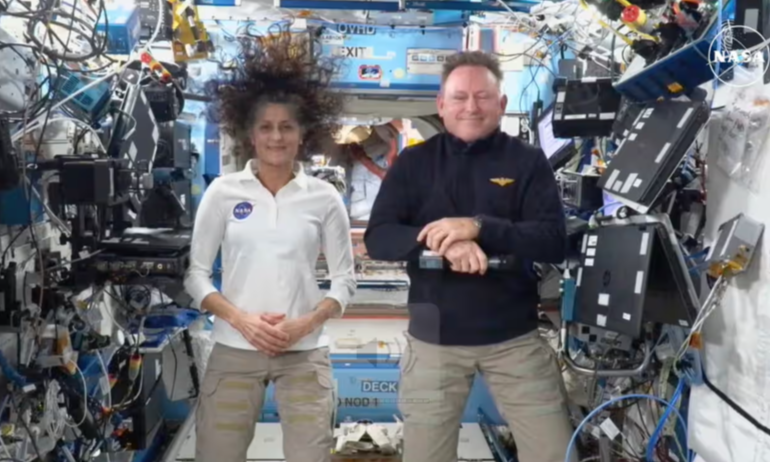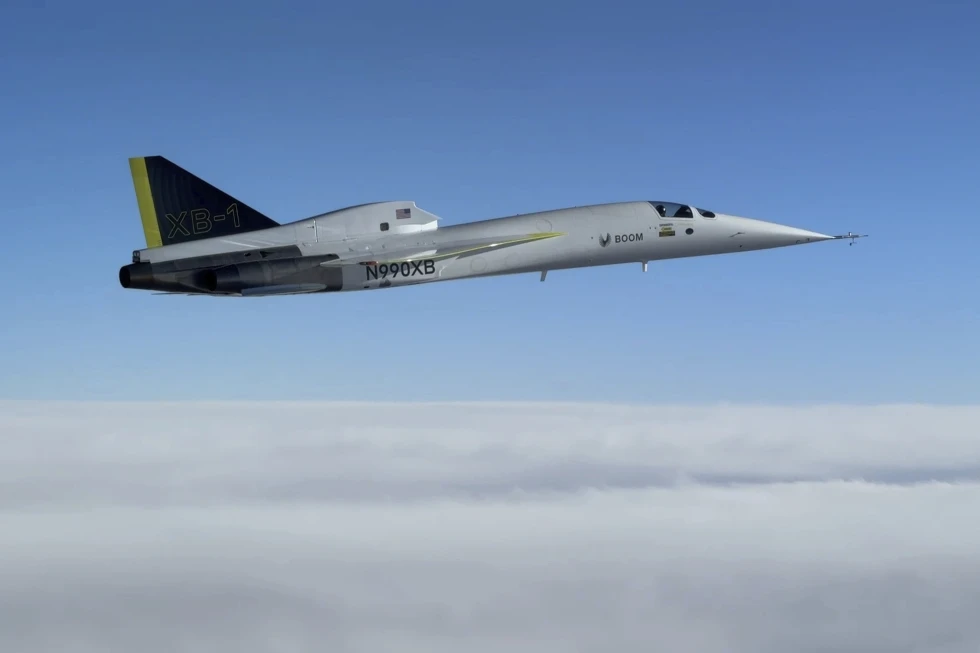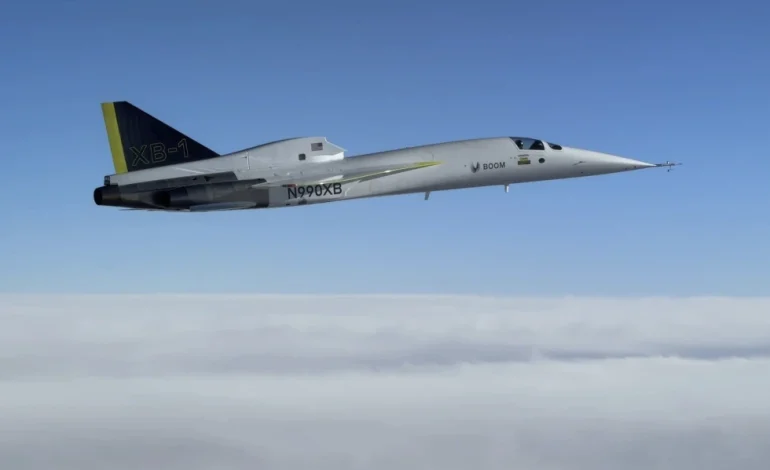A groundbreaking achievement in aviation history occurred on Tuesday when the XB-1 aircraft became the first independently developed jet to break the sound barrier, the Associated Press reports.
The sleek white jet soared tens of thousands of feet above California’s Mojave Desert, thrilling onlookers as it reached Mach 1.05, just 11 minutes after takeoff.
The test flight took place at the Mojave Air & Space Port in Mojave, California, where Boom Supersonic, the company behind the XB-1, is working to revive supersonic passenger travel. This marks a significant step forward, following the end of the Concorde’s service more than two decades ago.
Boom Supersonic aims to build on this success by focusing on its next project, the Overture airliner. The company envisions this supersonic jet carrying up to 80 passengers at speeds roughly twice the velocity of today’s conventional airliners. According to Blake Scholl, Boom’s founder and CEO:
“XB-1’s supersonic flight demonstrates that the technology for passenger supersonic flight has arrived. A small band of talented and dedicated engineers has accomplished what previously took governments and billions of dollars.”
The XB-1, which first flew in March, is constructed primarily from lightweight carbon fiber. Its innovative design includes an augmented reality vision system to assist pilots with landing, as its long nose and steep approach angle can obstruct visibility. This cutting-edge system enhances the aircraft’s ability to land safely in a variety of conditions.
Amy Marino Spowart, president and CEO of the National Aeronautic Association, praised the achievement, saying:
“The future of aviation is here and now. Not only is there hope for faster and better commercial flight, but Boom proves that it can be done sustainably.”
Despite the excitement surrounding these advancements, the return of supersonic passenger travel faces challenges. The Concorde’s sonic booms, a byproduct of surpassing the speed of sound, led to restrictions on its flight paths, especially overland. Sonic booms occur when an aircraft moves faster than the speed of sound, creating shockwaves that are heard on the ground. This phenomenon may present obstacles for any future commercial supersonic flights.
Interestingly, Tuesday’s flight occurred in the same airspace where, in 1947, Charles “Chuck” Yeager made history as the first person to break the sound barrier in a Bell X-1 rocket plane.








